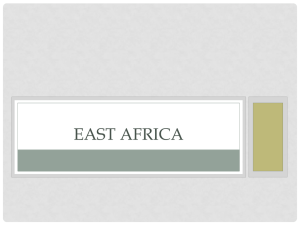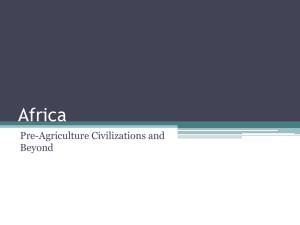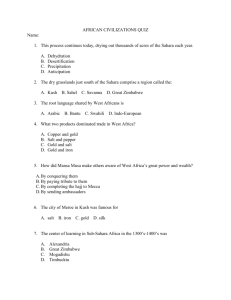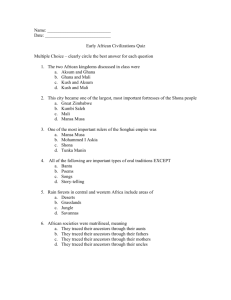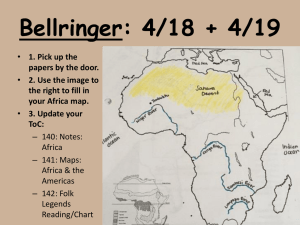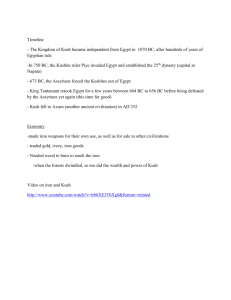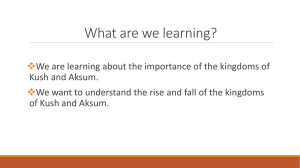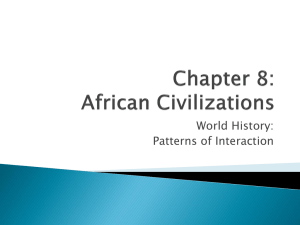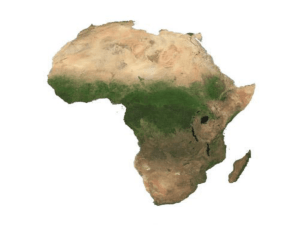Societies & Empires in East & South Africa
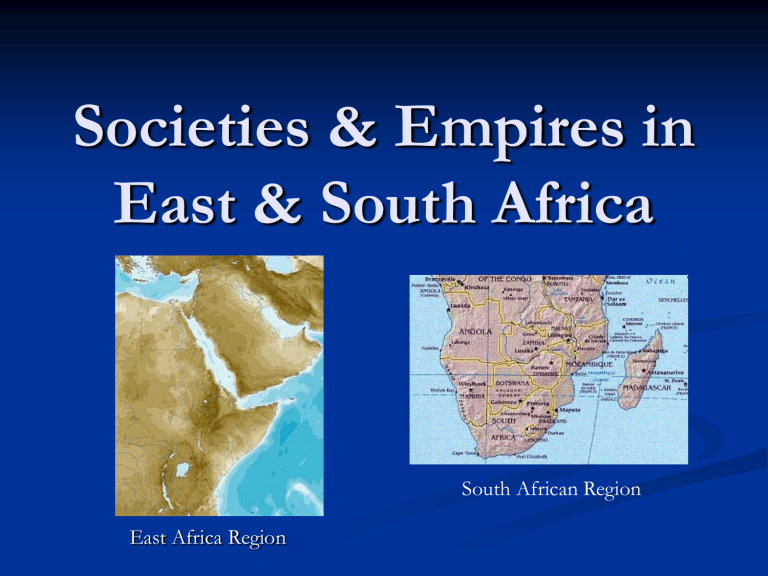
Societies & Empires in
East & South Africa
East Africa Region
South African Region
Kush Empire
Kush (Nubians) => S of Egypt, beyond 1 st cataract
Long controlled by Egypt
Source of many products, slaves
1000 BC – Egypt in decline from
“People of the Sea” & Libyan invasion
Kush gains independence and attack
Egypt to “liberate” it
751 BC – King Piankhi led army down Nile
Captured Egyptian throne
Became 25 th Dynasty
671 BC – Assyrians invade, conquer
Egypt; Kush retreat up Nile
Kush Empire – Meroe
Golden Age of Meroe (Mehroh-ee)(650 BC-350 AD)
Despite loss of Egypt experienced Golden Age
Lots of rain – great agriculture
Vast amounts of iron ore –
Meroe’s ironworkers became most talented in Africa
Trade Center for Nile, Red Sea
Strong leaders kept nation safe
(Queen Candace vs. Alexander the Great)
Decline of Meroe
Poor leadership led to decline
Rise of Askum (Ax-oom) – defeat Meroe in 350 AD
Pyramids around Meroe
Kingdom of Askum
Background – SE of Kush
First kings traced back to Solomon & Queen of Sheba
Began conquering neighbors, establishing their kingdom
Control of Trade
Traded from Nile to Red Sea to Med to
Indian Ocean
Hub of trade for luxuries
Maintained strong navy – Askum considered world power
King Ezana (325-360 AD)
Converted to Christianity
Expanded empire by invading Kush
Askum considered a world power
Askum gold coins, 3d C. AD
Askum, at greatest extent
Culture of Aksumites
Variety of languages spoken
Spread of Christianity after Ezana converted, made it state religion
Architecture – used stone to create great palaces, obelisks
Farming - terraced fields
Developed written language and coinage
Aksum
Obelisk of Aksum
Typical Aksum
Architecture
(church pictured)
Fall of Aksum
Islam on rise, creating caliphate
710 – Islamic invaders capture all Red
Sea ports, blocking Aksum from trade routes
Christian Aksum was surrounded by the Islamic Empire
Isolated geographically, culturally,
Aksum was no longer a world power
Glass goblets of Aksum, c.
30 AD
Aksum trade routes (red lines)
Great Zimbabwe (1100-1450)
Rainfall was great for farming, grazing
Trade routes linked inland to coastal cities
Leaders taxed all trade going through region
Demanded tribute from surrounding areas
Became center of economics, politics in South
Mysterious decline by 1450s
Stateless Societies
Hunter gatherers
Much of Southern Africa
Small lineage (family) groups of
50 or fewer
Generally nomadic, moving to a new area when resources ran out
Men hunt, women gather food
Traded with settled people for needed tools
Led by elder male, BUT each group free to make own decisions
Hunter gatherer camp, c. 1800 (S. African
Museum display)
Stateless Societies of Central Africa
System of Gov’t based on LINEAGE
GROUPS
LG were descendants from a common ancestor
Power shared among all families so no one had too much power over others
No centralized system of power
Ibo, Tiv, & Nuer were related lineage groups from C Africa
Nuer = 250,000 people without a formal ruler
Lived in area of South Sudan / West
Ethiopia
All resolve disputed by elders from different lineage groups
Able to defend selves against Europeans during 17 th , 18 th C Nuer riding upon his Dinka slave
(circa 1930)
